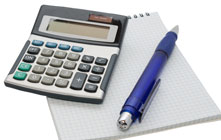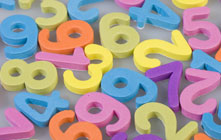Kids Logic Problems: Fun Ways to Introduce Kids to Logic
There is a whole field of logic in mathematics that is complicated and not applicable to the average person. What most people call math logic refers to inductive and deductive reasoning. This kind of logic can be used for more than math; however, mathematics is a logical place (no pun intended) for students to learn to reason.

Teaching Fun, Logical Thinking to Kids
What Is Deductive Reasoning?
Deductive reasoning begins with the cause and makes conclusions about the effects. Or you might say it begins with general principles that are used to discover more detailed information about a topic or situation. In this type of reasoning, one begins with a theory, narrows that down to testable hypotheses, gathers relevant observations and finally a confirmation or disproving of the theory.
What Is Inductive Reasoning?
Inductive reasoning is the opposite of deductive reasoning and is sometimes labeled generalization. It is reasoning that begins with detailed information about a topic or situation and using that information to find general principles or come to a conclusion. It might be stated as beginning at the effect to discover the cause. In this type of reasoning, we start with precise observation, look for patterns, compose experimental hypotheses to be explored and end with a theory or general judgment.
Methods for Teaching Math Logic
Although there are curriculums that specifically teach logic, sometimes called critical thinking, nowadays most math logic is taught more subtly through one or more of the following methods.
Word Problems
Math word problems require logical thinking to figure out how to find the solution. Some are simple enough that they are suitable for first grade students. For example:
- Mr. Squirrel is hiding nuts for the winter. He hid fewer than 12 nuts, but more than nine. He didn't hide ten nuts, so how many nuts did he hide?
Answer: 11 nuts
Older students can think through more complex problems, like:
- Together, Carol, Donna, Sally and Victoria brought 177 jars to the recycling center in 24 sacks. Each of them had the same number of jars in all of her sacks. However, none of them had the same number in her sacks as any of the others.
• Carol and Victoria had the same number of sacks.
• Between them, Donna and Sally filled 12 sacks, but Donna had two more sacks than Sally.
• Donna and Victoria had the same number of jars.
• Carol and Sally figured that together they had nine more jars than Donna and Victoria had jointly collected.
• Each of the girls had brought between 40 and 50 jars.
How many sacks did each girl bring?
How many jars were in each of their sacks?
Answer:
• Carol had 48 jars: eight jars in each of the six sacks.
• Donna had 42 jars: six jars in each of the seven sacks.
• Sally had 45 jars: nine jars in each of the five sacks.
• Victoria had 42 jars: seven jars in each of the six sacks.
Puzzles
There are many kinds of logic puzzles for people to solve. Those that are most common for kids are Sudoku and Kendoku puzzles.
A Sudoku puzzle is a grid that has numbers in some of the cells; the player must fill in the other numbers. A 3x3 grid is the simplest form for young kids. Since there are three rows and three columns in the grid, numbers 1-3 are used. Each number can be used only once in each row and each column. As an example, one vertical column could have the numbers one and three already filled in, and the player would solve the puzzle by filling in the rest of the cells.
More complex games have larger grids, and often have a combination of smaller and larger grids. A common one is a 9x9 grid that is composed of nine 3x3 grids. In these, the numbers 1-9 are used only once in each column, row, and 3x3 grid.
A Kendoku puzzle is similar to Sudoku in that is uses a grid and a number can be used only once in each column and row. However, it also uses math operations (+, -, x, ÷). The grid is not divided into blocks, but into a variety of groupings called cages. Numbers can be repeated in the cages, just not in the rows or columns.
A target number and math sign appear in the upper left corner of each cage (e.g., 2÷ or 8+). This indicates how the numbers in the cage work together to come up with the target number. So, if you have three cells with 8+, depending on how the cells are arranged (straight line or L-shape), the numbers might be one, one and six; or two, three and three; or four, three and one, etc.
Other Games
There are too many kinds of logic games and puzzles to present here. Sites that have a number of them include BrainBashers (www.brainbashers.com), Discovery Education (www.discoveryeducation.com - search for 'Brain Boosters') and SuperKids (www.superkids.com - see 'logic games' in the left column).
Puzzle Books
One of the best known puzzle books might be The Moscow Puzzles: 359 Mathematical Recreations by Boris A. Kordemsky. However, this book might be best appreciated by older students.
Math and Logic Puzzles That Make Kids Think by Jeffrey Wanko is appropriate for grades 6-8. Books that are geared to fifth graders and older include Math Logic Mysteries and More Math Logic Mysteries by Marilynn Rapp Buxton.
Other Articles You May Be Interested In
-
Sudoku: a Logic Based Educational Puzzle for Kids

Playing sudoku can improve your child's critical thinking, math, and logic skills. These puzzles vary in level of difficulty and can provide fun for students of all ages. Read on to learn more about this addictive puzzle.
-
Battleship: A Logic and Critical Thinking Skill Game for Kids

Battleship is a fun game and a great learning tool. It's a fun way to improve your child's graphing and critical thinking skills. Read on to learn more.
We Found 7 Tutors You Might Be Interested In
Huntington Learning

- What Huntington Learning offers:
- Online and in-center tutoring
- One on one tutoring
- Every Huntington tutor is certified and trained extensively on the most effective teaching methods
K12

- What K12 offers:
- Online tutoring
- Has a strong and effective partnership with public and private schools
- AdvancED-accredited corporation meeting the highest standards of educational management
Kaplan Kids

- What Kaplan Kids offers:
- Online tutoring
- Customized learning plans
- Real-Time Progress Reports track your child's progress
Kumon

- What Kumon offers:
- In-center tutoring
- Individualized programs for your child
- Helps your child develop the skills and study habits needed to improve their academic performance
Sylvan Learning

- What Sylvan Learning offers:
- Online and in-center tutoring
- Sylvan tutors are certified teachers who provide personalized instruction
- Regular assessment and progress reports
Tutor Doctor

- What Tutor Doctor offers:
- In-Home tutoring
- One on one attention by the tutor
- Develops personlized programs by working with your child's existing homework
TutorVista

- What TutorVista offers:
- Online tutoring
- Student works one-on-one with a professional tutor
- Using the virtual whiteboard workspace to share problems, solutions and explanations